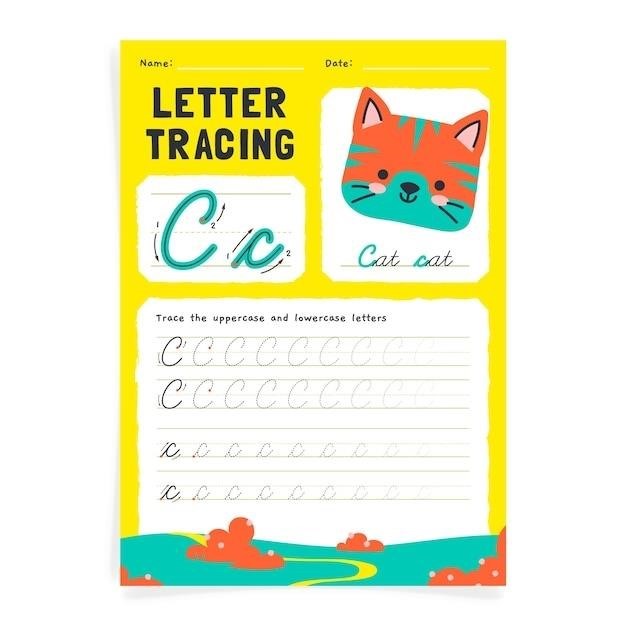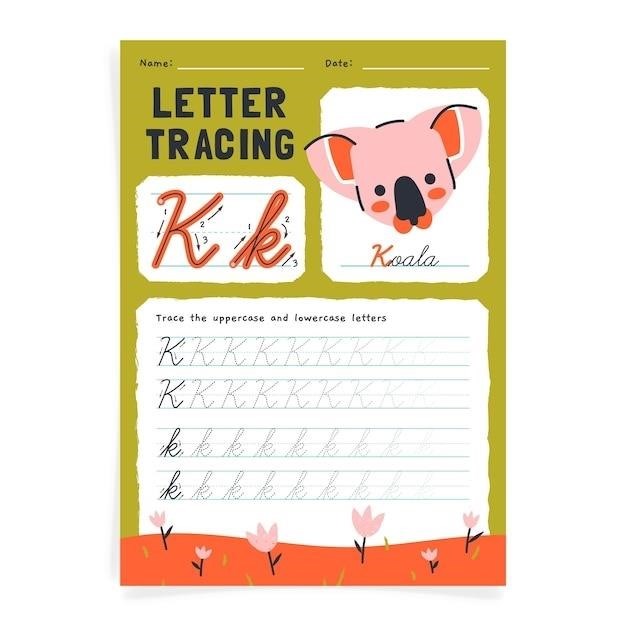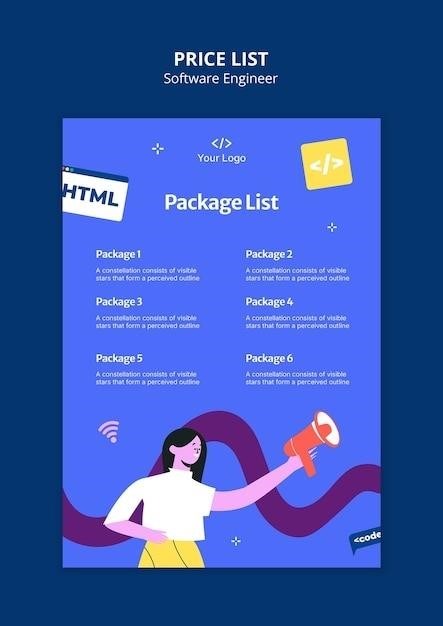
First Grade Reading Worksheets PDF⁚ A Comprehensive Guide
First-grade reading worksheets are an invaluable tool for helping young learners develop essential reading skills․ These printable resources offer a structured and engaging way to practice phonics, sight words, vocabulary, and reading comprehension․ This comprehensive guide will explore the benefits of using first-grade reading worksheets, delve into different types of worksheets, and provide insights on where to find and effectively utilize them․
Introduction
First grade is a crucial year in a child’s literacy development, as they transition from learning the basics of letters and sounds to reading simple sentences and short stories․ First-grade reading worksheets play a vital role in supporting this journey, providing a structured and engaging platform for practicing essential reading skills․ These worksheets offer a variety of activities designed to reinforce phonics, sight words, vocabulary, and reading comprehension, making them an indispensable resource for both teachers and parents․
The accessibility of first-grade reading worksheets in PDF format adds another layer of convenience․ Printable PDFs allow for easy access, personalization, and repeated use, making them a highly adaptable tool for individual learning needs․ Whether used in the classroom, at home, or during summer break, these worksheets can effectively supplement traditional reading instruction and help first graders solidify their reading foundation․
Benefits of Using Worksheets
First-grade reading worksheets offer a multitude of benefits for young learners, making them an essential component of a well-rounded reading curriculum․ These benefits extend beyond the classroom, providing valuable support for parents and educators alike․ Here are some key advantages of incorporating first-grade reading worksheets into learning routines⁚
Reinforced Learning⁚ Worksheets offer a structured and repetitive approach to practicing reading skills, allowing students to solidify their understanding of phonics, sight words, and vocabulary․ This reinforcement helps them internalize concepts and build confidence in their reading abilities․
Individualized Learning⁚ Worksheets can be tailored to meet individual learning needs, allowing students to work at their own pace and focus on areas where they require additional practice․ This personalized approach ensures that every student receives the appropriate level of support and challenges․
Engaging Activities⁚ First-grade reading worksheets often incorporate fun and engaging activities, such as puzzles, coloring, and interactive games, making learning more enjoyable and motivating․ This playful approach helps maintain student interest and fosters a positive attitude towards reading․
Types of Worksheets
First-grade reading worksheets encompass a wide array of exercises designed to target specific reading skills․ These worksheets provide a comprehensive approach to literacy development, ensuring that students receive a well-rounded foundation in reading comprehension, phonics, sight words, and vocabulary․ Here are some of the most common types of first-grade reading worksheets⁚
Reading Comprehension Worksheets⁚ These worksheets focus on developing students’ ability to understand and interpret written text․ They may include passages followed by multiple-choice questions, short answer questions, or open-ended prompts that encourage critical thinking and analysis․
Phonics Worksheets⁚ Phonics worksheets help students learn the relationship between letters and sounds․ They may feature activities such as identifying beginning and ending sounds, blending sounds to form words, or recognizing rhyming words․ These worksheets lay the foundation for decoding words and improving reading fluency․
Sight Words Worksheets⁚ Sight words are commonly used words that students learn to recognize instantly․ Worksheets focusing on sight words may involve activities like matching words, writing words, or filling in missing letters․ These worksheets help students build a strong foundation of commonly used words, increasing their reading speed and fluency․
Reading Comprehension Worksheets
Reading comprehension worksheets are a cornerstone of first-grade reading instruction․ These worksheets help students develop the ability to understand and interpret written text, a crucial skill for successful reading․ They typically present students with short passages, stories, or articles followed by a variety of comprehension questions․ These questions can range from simple recall tasks, such as identifying main characters or key events, to more complex analytical questions that require students to infer meaning, draw conclusions, or make connections between ideas․
First-grade reading comprehension worksheets often incorporate engaging themes and topics that are relevant to young learners․ They may feature stories about animals, everyday experiences, or familiar objects․ Colorful illustrations and engaging narratives help to capture students’ attention and make the learning process more enjoyable․ By providing opportunities to practice reading comprehension skills in a fun and interactive way, these worksheets help students develop a strong foundation for understanding written text․
In addition to multiple-choice questions, first-grade reading comprehension worksheets may also include open-ended prompts that encourage students to express their understanding in their own words․ These prompts can be in the form of short answer questions, writing activities, or even drawing exercises․ By providing diverse question types, these worksheets cater to different learning styles and help students demonstrate their comprehension in a variety of ways․

Phonics Worksheets
Phonics worksheets play a vital role in helping first graders decode words and develop their reading fluency․ These worksheets focus on the relationship between sounds and letters, providing students with a structured approach to understanding the building blocks of language․ They typically present a variety of activities designed to reinforce phonics concepts, such as identifying the initial, medial, or final sounds in words, blending sounds together to form words, or segmenting words into their individual sounds․
Many phonics worksheets incorporate engaging visuals and colorful illustrations to make the learning process more interactive and enjoyable for young learners․ They may feature pictures of objects or animals that correspond to the sounds being practiced․ Some worksheets may also include games or puzzles that encourage students to apply their phonics knowledge in a fun and playful way․ This approach not only helps students master phonics skills but also promotes a positive attitude towards learning․
Phonics worksheets can be tailored to different learning styles and abilities․ Some worksheets focus on specific vowel sounds or consonant blends, while others provide a more comprehensive overview of phonics rules․ By offering a variety of resources, teachers and parents can select worksheets that are appropriate for each student’s individual needs and learning pace․ As students progress through the phonics curriculum, they can gradually move on to more challenging worksheets that introduce new sounds and spelling patterns․
Sight Words Worksheets
Sight words, also known as high-frequency words, are common words that appear frequently in reading material․ Mastering these words is crucial for first graders as it allows them to read more fluently and with greater comprehension․ Sight words worksheets are designed to help students recognize and recall these important words without having to sound them out․ This is achieved through repeated exposure and practice․
These worksheets often present sight words in various formats, such as flashcards, word searches, matching games, or fill-in-the-blank sentences․ Students may be asked to trace the words, write them from memory, or identify them within a list of other words․ Some worksheets incorporate engaging illustrations or short stories that incorporate the target sight words, making the learning process more interactive and enjoyable․
The use of sight words worksheets can be tailored to individual learning preferences․ Some students may benefit from visual aids like flashcards, while others may respond better to interactive games or activities․ By providing a variety of worksheets, teachers and parents can cater to the unique learning styles of each student․ Regularly incorporating sight words worksheets into the learning routine can help first graders build a strong foundation in reading fluency and comprehension․
Vocabulary Worksheets
Vocabulary worksheets are essential tools for expanding a first grader’s knowledge of words and their meanings․ These worksheets introduce new vocabulary in a fun and engaging manner, helping students develop a strong foundation for reading comprehension and communication․ They typically present words in various contexts, encouraging students to understand their definitions, synonyms, and antonyms․
First-grade vocabulary worksheets often feature colorful illustrations, word puzzles, and interactive activities that make learning enjoyable․ Students may be asked to match words with their definitions, complete sentences with appropriate vocabulary words, or create their own sentences using the new vocabulary; Some worksheets even incorporate games like crosswords or word searches to make the learning process more interactive and stimulating․
Vocabulary worksheets are particularly valuable for first graders as they transition from learning basic words to encountering more complex vocabulary․ By introducing new words in a structured and engaging manner, these worksheets help students build a strong vocabulary base that will serve them well in their future reading and writing endeavors․ Regular use of vocabulary worksheets can significantly enhance a first grader’s ability to understand and communicate effectively․
Where to Find Worksheets
Finding high-quality first-grade reading worksheets is easier than ever thanks to the abundance of online resources․ Several websites offer free printable worksheets covering various reading skills, including phonics, sight words, vocabulary, and reading comprehension․ These websites are often designed for educators and parents, providing a convenient and accessible way to access valuable learning materials․
One popular source for free worksheets is K12Reader, which offers a wide range of printable resources for various grade levels․ Another valuable resource is GreatSchools, which provides free printable worksheets for a variety of subjects, including reading․ Games4esl offers a selection of reading comprehension worksheets that cater to first-grade students․ These websites often include engaging activities and colorful visuals that make learning enjoyable for young learners․
In addition to online resources, parents and educators can also find first-grade reading worksheets at local bookstores, libraries, and educational supply stores․ These physical locations offer a wider range of options and allow for hands-on browsing, providing a more personalized experience for selecting the right worksheets for individual needs․
Tips for Using Worksheets
While first-grade reading worksheets offer a valuable resource for learning, it’s essential to use them effectively to maximize their impact․ Here are some tips for incorporating worksheets into your child’s learning routine⁚
Start with a positive attitude⁚ Make learning fun! Approach worksheets as opportunities for exploration and discovery, rather than tedious tasks․ Use encouraging words and celebrate successes․
Choose appropriate worksheets⁚ Select worksheets that align with your child’s current reading level and interests․ Start with easier worksheets and gradually introduce more challenging ones as they progress․
Make it interactive⁚ Turn worksheets into engaging activities․ Read the passages aloud together, discuss the questions, and use colorful markers or crayons to complete the exercises․
Integrate with other learning activities⁚ Connect worksheets to real-life experiences, such as reading books together, visiting the library, or engaging in conversations about everyday events․
Provide feedback and encouragement⁚ Review completed worksheets with your child, offer praise for their efforts, and guide them through any areas they may need assistance with․ Celebrate their successes and encourage them to keep practicing․
First-grade reading worksheets are a valuable tool for supporting young learners in their reading journey․ By providing structured practice in phonics, sight words, vocabulary, and comprehension, these worksheets contribute to the development of essential reading skills․ Whether used in the classroom or at home, they offer a fun and engaging way to reinforce learning and foster a love of reading․
Remember, the key to success lies in choosing appropriate worksheets, making learning interactive, and providing positive reinforcement; With the right approach, first-grade reading worksheets can be a powerful tool for helping children build a strong foundation in reading and unlock a world of literary adventures․
As children progress through first grade, continue to explore different types of worksheets and adapt your approach to meet their evolving needs․ With consistent effort and a positive learning environment, first graders can confidently embark on their reading journey and develop a lifelong love of books․















